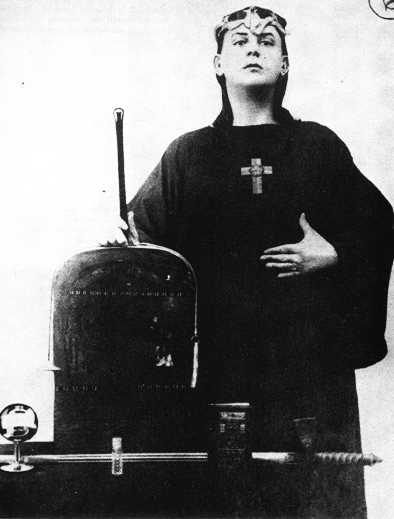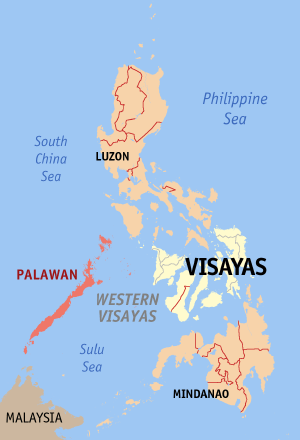Stephenson:Neal:Cryptonomicon:316:Sultanic (Alan Sinder)
From the Quicksilver Metaweb.
The Cryptonomicon page for the Sultan circa 1999
Stephensonia
The Sultan does a decent Aleister Crowley act in Chapter 36: 
Aleister Crowley
A Man Known As the Lizard King.***
The sultan has an Oxford English accent with traces of garlic and red pepper still wedged in its teeth. He speaks for about fifteen minutes.
The room contains a few dozen living human bodies, each one a big sack of guts and fluids so highly compressed that it will squirt for a few yards when pierced. Each one is built around an armature of 206 bones connected to each other by notoriously fault-prone joints that are given to obnoxious creaking, grinding, and popping noises when they are in other than pristine condition. This structure is draped with throbbing steak, inflated with clenching air sacks, and pierced by a Gordian sewer filled with burbling acid and compressed gas and asquirt with vile enzymes and solvents produced by the many dark, gamy nuggets of genetically programmed meat strung along its length. Slugs of dissolving food are forced down this sloppy labyrinth by serialized convulsions, decaying into gas, liquid, and solid matter which must all be regularly vented to the outside world lest the owner go toxic and drop dead. Spherical, gel-packed cameras swivel in mucus-greased ball joints. Infinite phalanxes of cilia beat back invading particles, encapsulate them in goo for later disposal. In each body a centrally located muscle flails away at an eternal, circulating torrent of pressurized gravy. And yet, despite all of this, not one of these bodies makes a single sound at any time during the sultan's speech. It is a marvel that can only be explained by the power of brain over body, and, in turn, by the power of cultural conditioning over the brain.
Their host is trying to be appropriately sultanic: providing vision and direction without getting sucked down into the quicksand of management. The basic vision (or so it seems at first) is that Kinakuta has always been a crossroads, a meeting-place of cultures: the original Malays. Foote and his dynasty of White Sultans. Filipinos with their Spanish, American and Nipponese governors to the east. Muslims to the west. Anglos to the south. Numerous Southeast Asian cultures to the north. Chinese everywhere as usual. Nipponese whenever they are in one of their adventurous moods, and (for what it's worth) the neolithic tribesmen who inhabit the interior of the island.
Hence nothing is more natural than that the present-day Kinakutans should run big fat optical fiber cables in every direction, patch into every major national telco within reach, and become a sort of digital bazaar. *
Authored Pages
- Stephenson:Neal:Cryptonomicon:30:the real Philippines. Randy pays no attention to it (Alan Sinder)
- Stephenson:Neal:The Confusion:681:after we had installed Mr. Foot as Sultan (PaulJ)
- Stephenson:Neal:The Confusion:691:yo-yo (Alan Sinder)
Sulu Sea
The Sulu Sea is a large sea in the southwestern area of the Philippines. It is separated from the South China Sea in the northeast by Palawan, and from the Celebes Sea in the southeast by the Sulu Archipelago.
The Sulu Sea
Sulu Archipelago is an island chain in the southwest Philippines. It is considered to be part of Moroland by the local independence movement. The native language is Sama. The island chain is one of two partial land bridges to Borneo and is an important migration route for birds. Borneo is found to the southwest and Visayas to the northeast.
Sulu Sea contains a number of islands. The Cuyo Islands and Cagayan Sulu are part of the province of Palawan while Cagayan de Tawi-Tawi and the Turtle Islands are part of the province of Tawi-Tawi. Sule Sea is also where the Tubbataha Reef National Marine Park, one of the World Heritage Sites is located.
Tawi-Tawi is an island province of the Philippines located in the Autonomous Region in Muslim Mindanao (ARMM). The capital of Tawi-Tawi is Panglima Sugala and the province is the southernmost in the country. To the northeast lies the province of Sulu and to the west is Sabah in Malaysia. Tawi-Tawi also covers some islands in the Sulu Sea to the northwest, the Cagayan de Tawi-Tawi Island and the Turtle Islands, just 20 kilometers away from Sabah.
South China Sea
The South China Sea (Chinese): Nan Hai 南海/南洋, literal meaning: "South Sea") is a marginal sea, part of the Pacific Ocean, encompassing an area from Singapore to the Strait of Taiwan of around 3,500,000 km². The minute South China Sea Islands, collectively an archipelago, number in the hundreds.
A number of nations, particularly the Philippines, object to the name "South China Sea", in that it implies Chinese sovereignty over the sea, which they dispute. Ironically, the Chinese name for the sea does not contain the name "China" in it.
Borneo
Borneo is an island, the third largest island in the world, (fourth if you count Australia) located at the center of Indonesia. Borneo is considered part of the geographic region of Southeast Asia.
Borneo is surrounded by the South China Sea to the west and northwest, the Sulu Sea to the northeast, the Celebes Sea and the Makassar Strait to the east, and the Java Sea and Karimata Strait to the south.
It is divided politically into: * The Indonesian provinces of East, South, West and Central Kalimantan. * The Malaysian states of Sabah and Sarawak. * The independent sultanate of Brunei.
Borneo was the main site of the Confrontation between Indonesia and Malaysia between 1962 and 1966.
To the west of Borneo are the Malay Peninsula and Sumatra. To the south is Java. To the northeast are the Philippines.
Borneo From Space
Natural Resources
The Island has lots of rainforests, but the area is shrinking rapidly due to heavy logging for the needs of Malaysian plywood industry and also multinational companys such as Mitsubishi take their share. Actually one half of the annual tropical timber acquisition of the whole world comes from Borneo.
Primitive people (e.g. Kayan, Kenyah, Punan Bah and Penan) living on the island are not too happy about the logging and they try to fight for their rights to preserve their environment.
The type of rainforests found in Borneo include rare peat-swamp forests.
Related Links
External links
- TBA
